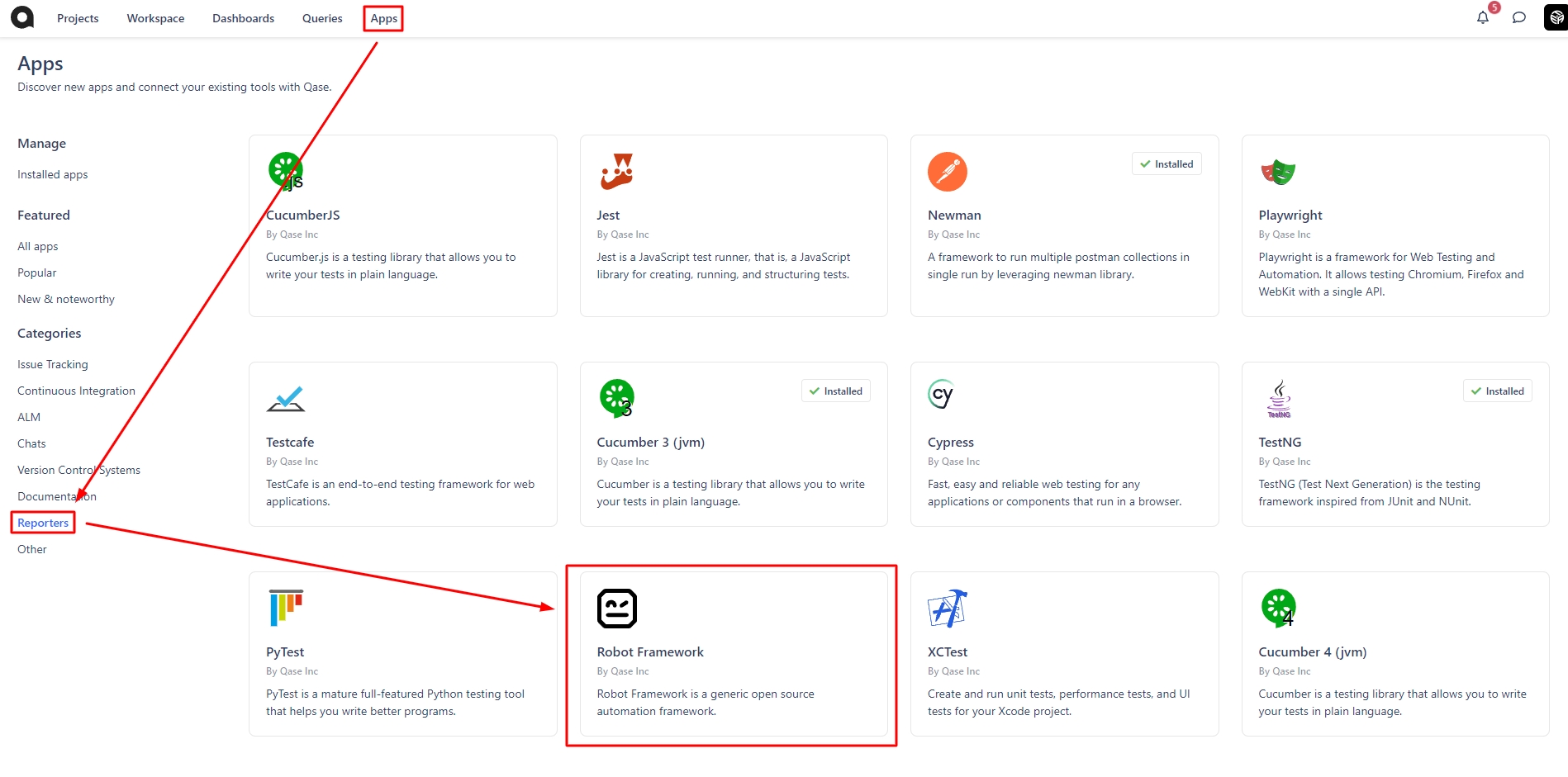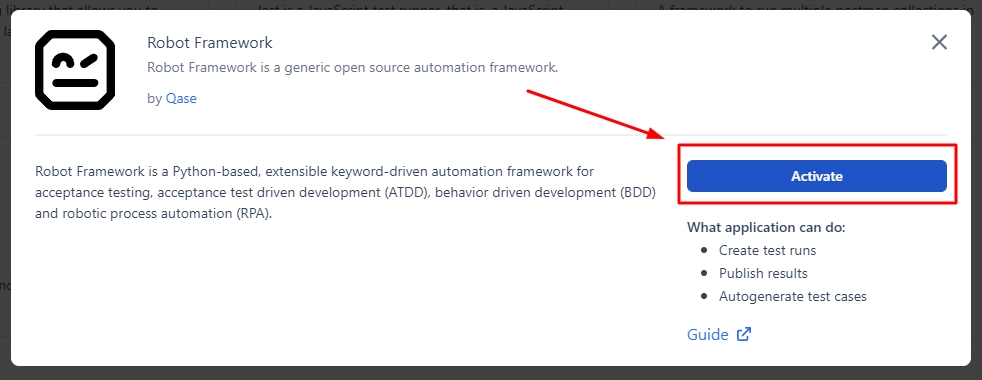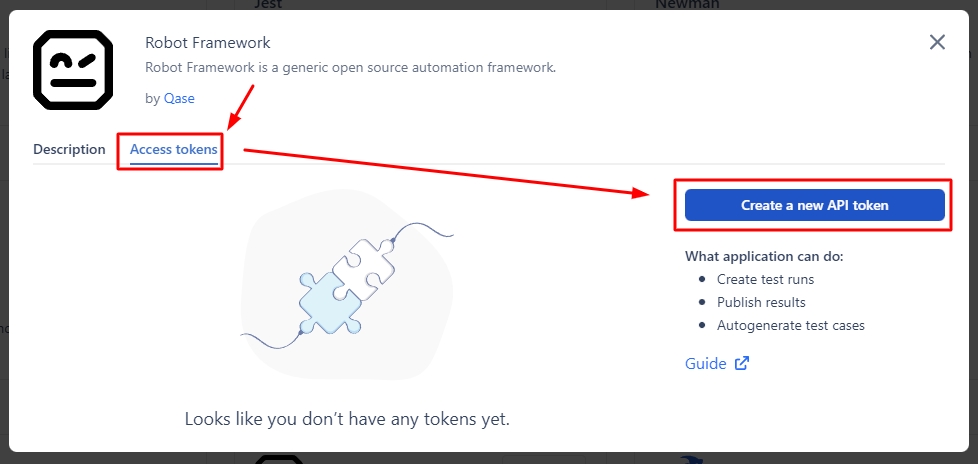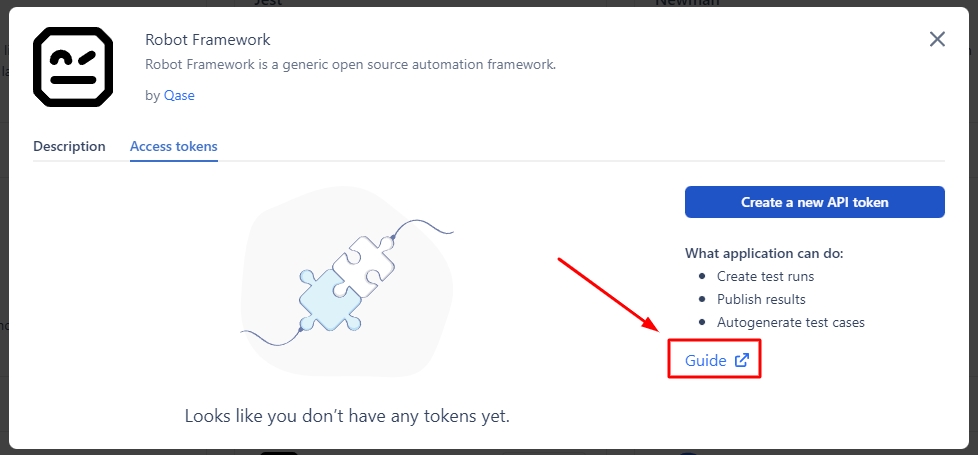Robot Framework
What is Robot Framework?
Robot Framework is a generic test automation framework for acceptance testing and acceptance test-driven development. It is a keyword-driven testing framework that uses tabular test data syntax.
How to install Robot Framework?
To pass the results of your Robot Framework executions, you need to install the Robot Framework app.
Navigate to the Apps page and switch to the "Reporters" section, then click the "Robot Framework" card:

Click "Activate":

Switch to "Access Tokens" and generate an API token that the Robot Framework app will be using:

Click "Guide" to access the instruction on adding the Robot Framework reporter to your automation flow:

Once the Robot Framework app is installed, any test cases, test runs, and test results created and submitted will appear with the Robot Framework as the author of said cases, runs or results (instead of a specific user whose API token has been used). Slack notifications will also appear with the Robot Framework app as the author.
Last updated